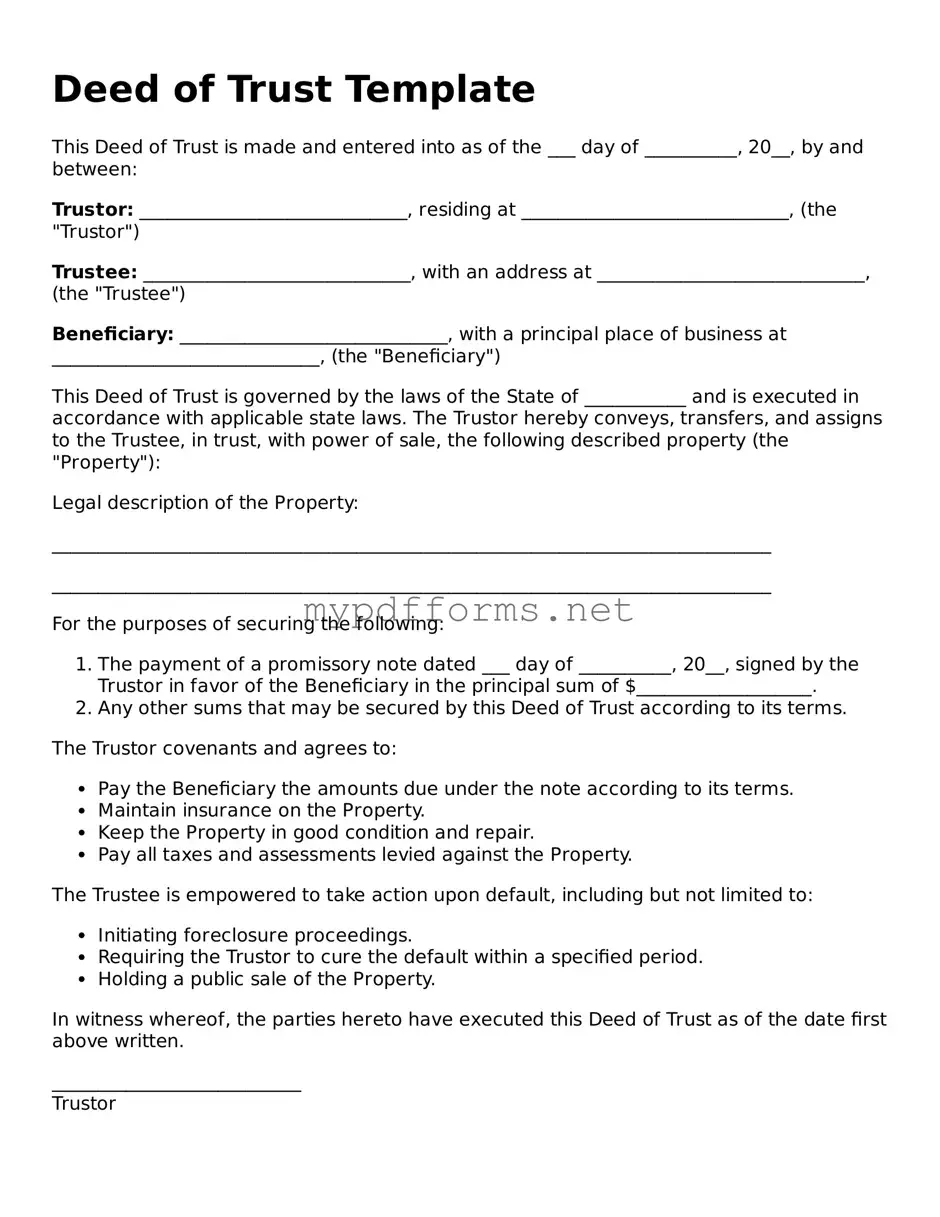A mortgage is a common document that serves a similar purpose to a Deed of Trust. Both documents secure a loan by placing a lien on the property. In a mortgage, the borrower retains ownership of the property while the lender has a claim against it until the loan is paid off. Like a Deed of Trust, a mortgage outlines the terms of the loan, including the repayment schedule and interest rate. However, the key difference is that a mortgage typically involves only two parties: the borrower and the lender.
Understanding the nuances of property transfer documents is essential, especially when considering a California Gift Deed form. This legal instrument not only facilitates the gift of property without monetary exchange but also plays a crucial role in protecting the rights of both the giver and the recipient. For those looking to ensure a smooth transaction, accessing the Gift Deed Form can be a helpful starting point.
A promissory note is another document closely related to a Deed of Trust. This note is a written promise from the borrower to repay the loan amount under specified terms. While the Deed of Trust secures the loan with the property, the promissory note details the borrower's obligation to repay. Both documents work together; the Deed of Trust provides security for the lender, while the promissory note outlines the borrower's commitment.
A land contract is similar to a Deed of Trust in that it involves the sale of property where the buyer makes payments over time. In a land contract, the seller retains legal title to the property until the buyer pays the full purchase price. This arrangement protects the seller, similar to how a Deed of Trust protects the lender. Both documents ensure that the buyer has an interest in the property, but the legal ownership remains with the seller until the contract is fulfilled.
A lease agreement can also be compared to a Deed of Trust in terms of securing an interest in property. While a lease does not involve a loan, it grants a tenant the right to occupy and use a property for a specified period in exchange for rent. Similar to a Deed of Trust, a lease agreement outlines the terms and conditions of use. However, in a lease, the landlord retains ownership, while a Deed of Trust involves a loan secured by the property.
An option agreement is another document that shares similarities with a Deed of Trust. This agreement gives a buyer the right, but not the obligation, to purchase property at a predetermined price within a certain timeframe. While the Deed of Trust secures a loan, an option agreement secures the buyer's potential interest in the property. Both documents create a legal interest in the property, although they serve different purposes in the real estate transaction.
A mortgage commitment letter is also related to the Deed of Trust. This letter is issued by a lender to confirm that they are willing to lend a specified amount under certain conditions. It serves as a preliminary agreement before the formal loan documents, including the Deed of Trust, are finalized. Both documents are essential in the loan process, as the commitment letter outlines the lender's terms, while the Deed of Trust secures the loan with the property.
A title insurance policy is another document that shares a connection with a Deed of Trust. While a Deed of Trust secures a loan with the property, title insurance protects the lender and borrower against potential issues with the property's title. Both documents are crucial in real estate transactions, as they help ensure that the lender's investment is protected. Title insurance provides peace of mind, while the Deed of Trust provides a legal claim on the property.
Finally, a quitclaim deed is similar in that it transfers interest in property, but it does not secure a loan like a Deed of Trust. A quitclaim deed allows one party to transfer their interest in a property to another without making any guarantees about the title's validity. While a Deed of Trust is used to secure a loan, a quitclaim deed can be used to transfer ownership or interest in property without a financial transaction. Both documents involve property rights but serve different legal purposes.
